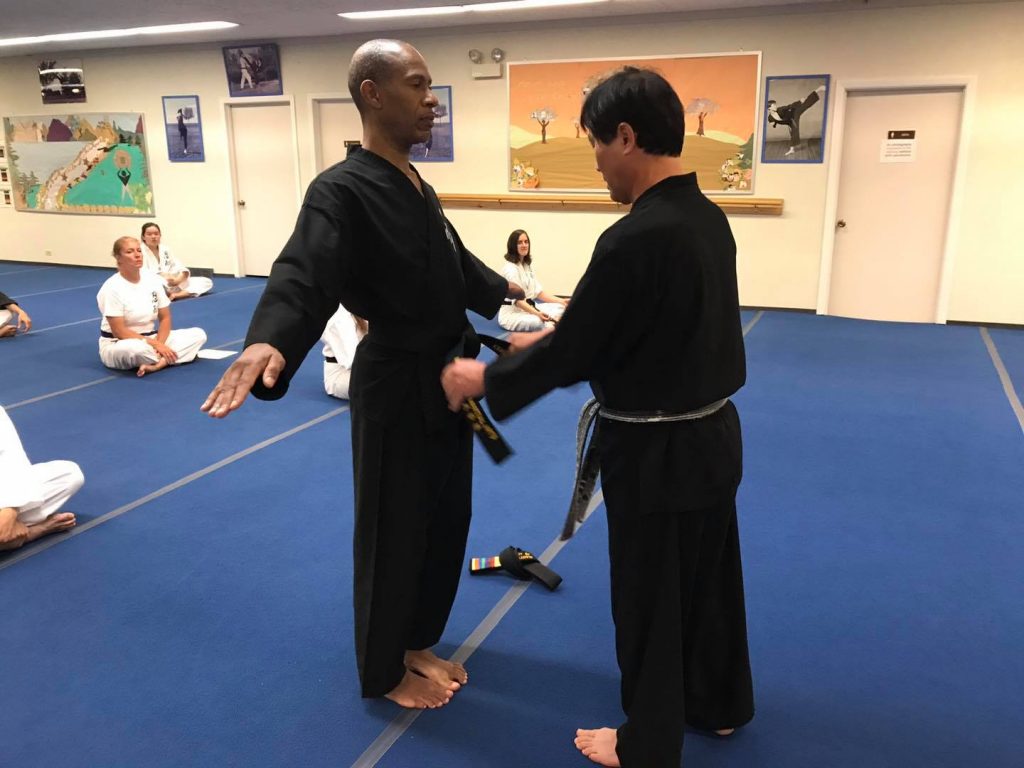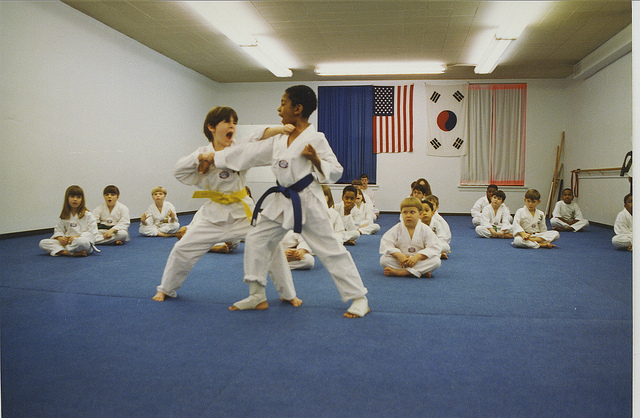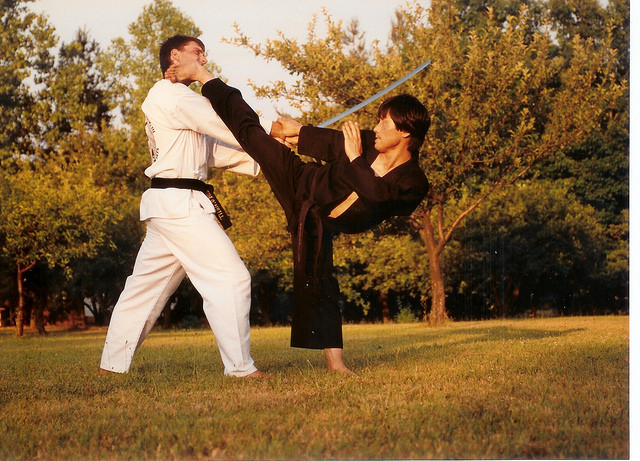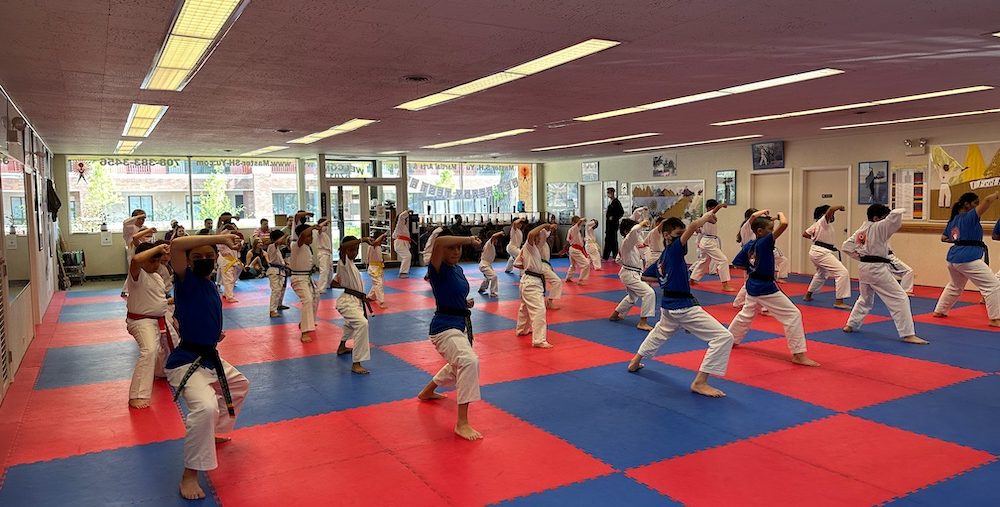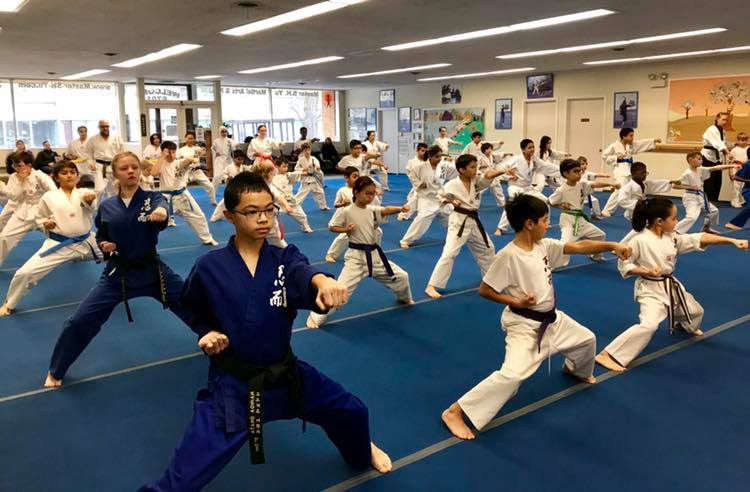
Get your BlackBelt: What is the Easiest Martial Art to Pursue?
Updated on March 10th, 2025 at 03:12 pm
Earning a black belt is a commendable achievement for anyone, and particularly for those of us pursuing martial arts skills. As a committed practitioner, the martial artist has progressed through the ranks and reached the pinnacle. A student is capable of earning a black belt faster in certain martial arts disciplines than in others.
What are martial arts?
Martial arts are a dynamic form of physical training that blends self-defense techniques with sport, exercise, and mental discipline. Whether you are looking to improve your fitness, gain confidence, or learn effective self-defense, martial arts provide a well-rounded approach to physical and mental well-being. Martial arts are popular for some of the following reasons:
- Full-Body Workout: Enhance strength, flexibility, and coordination with structured training.
- Self-Defense Skills: Learn essential techniques to protect yourself in real-life situations.
- Stress Relief & Focus: Martial arts training has shown to reduce stress, improve concentration, and build discipline.
- Sense of Accomplishment: Mastering new techniques and progressing through belt ranks increases confidence and motivation.
What does a black belt signify?
A black belt holds great significance. The student who has earned a black belt has combined both physical strength and mental determination to overcome difficulties. A practitioner who holds a black belt has demonstrated years of discipline, hard work and perseverance.
Having earned the black belt, the martial artist shows responsibility to not only himself or herself, but to others, and the community as well. The student is capable of exceptional self-defense skills and emotional mastery. A martial artist with a black belt shows respect, honor, discipline and focus in life.
Holding a black belt is not the final destination—it is just the beginning of a lifelong quest to learn using the tools already given. A practitioner wearing a black belt has the responsibility to pass on knowledge, encouragement and experience to willing students.
What series of belts lead to the black belt?
The journey toward earning a black belt is a long one. A student will train for years to perfect physical techniques while developing inner strengths, such as courage, focus and discipline. The student’s first step is to advance beyond the initial white belt.
A white belt represents the open-mindedness a student must possess in order to accept teachings from the master. Upon showing faith and trust in the teacher, the student progresses to a yellow belt, which represents a seed. The practitioner with a yellow belt grows to develop quality skills.
A green belt indicates growth, while the student with a blue belt displays maturity. The practitioner with a blue belt becomes strong mentally and physically and progresses to the red belt. A red belt represents the brightness of the sun and the ability to overcome disappointments and setbacks. There is the development of an aura of goodness, vitality, and patience. Read more about the meaning of each colored belt in martial arts here.
Earning a black belt is preceded by progressing through the ranks of several belts, many (but not all) of which have been mentioned. Every martial art requires a different length of time to achieve the coveted black belt. Some disciplines require ten years of training, while others only three. Of course, this varies based on time commitment and skill requirements. At Master S.H. Yu Martial Arts, we teach a repertoire of skills that require mastery and application prior to testing, but, on the average, our students can achieve their BlackBelt after 4 years of consistent study and practice.
1. Brazilian Jiu Jitsu (10 Years)
Brazilian Jiu-Jitsu (BJJ) is considered one of the more challenging martial arts due to its technical complexity and strict evaluation. A martial artist who trains in Brazilian Jiu Jitsu undergoes rigorous study. A black belt is extremely hard to achieve in this discipline. It is difficult to progress through the ranks; earning just a blue belt takes three to five years. A black belt may be earned in ten years, but it can range around 8-15 years depending on individual situations.
2. Karate (5 Years)
Karate can be challenging for learners due to its emphasis on precision in techniques and forms, which demand a meticulous attention to detail. The discipline’s focus on striking techniques requires practitioners to develop not only physical strength and speed but also precise coordination. Earning a black belt in karate depends on several variable factors. The student’s commitment is evaluated as well as the standards of the issuing martial arts school. It takes around five years of dedicated training to acquire the wisdom and spiritual growth necessary to advance to a black belt.
3. Aikido (4-5 Years)
Aikido is one of the less popular martial arts styles. Unlike some martial arts that focus on direct confrontation, Aikido emphasizes blending with an opponent’s energy and redirecting attacks, requiring practitioners to develop a deep understanding of harmony and fluidity. Learning to perform circular and flowing techniques, which involve joint locks and throws, can be intricate and demanding. The right mindset, even more so than technical and physical proficiency, is critical when progressing through the ranks of Aikido. A student must practice diligently several times a week for at least four to five years to obtain the first level of black belt.
4. Judo (3-6 Years)
Judo is considered one of the more physically demanding martial arts due to its emphasis on throwing and grappling. In the process of learning how to fall safely and land properly, individuals may find themselves susceptible to a lot of injuries. Perfecting match-winning throws is essential to moving through the upper ranks of judo. This discipline features ten black belt “dans.” Simply earning the first “dan” hardly qualifies the practitioner as a judo expert. Even the first “dan” can take three to six years to earn.
5. Tae Kwon Do (3-5 Years)
A student can earn a black belt in Tae Kwon Do faster than in any other form of the martial arts. Taekwondo is often considered relatively accessible for learners due to several factors. Taekwondo training often involves systematic and structured patterns (forms or poomsae), which provide learners with a clear progression and help reinforce muscle memory. Additionally, the sport’s point-based sparring system fosters a competitive environment that allows practitioners to apply their techniques in controlled settings, enhancing their practical understanding of combat.
Black belts in Tae Kwon Do are achieved in degrees, with the practitioner able to earn the first-degree black belt within three to five years. Some schools stipulate a minimum of four to five years of training before a student can earn a black belt, while others do not. The student must first pass a test that is based on the school’s curriculum. It is not uncommon for students to fail the test multiple times.
How to choose the best martial art for you
With so many martial arts styles available, finding the one that best suits your goals and lifestyle can feel overwhelming. Whether you are looking to improve fitness, learn self-defense, build discipline, or compete in sports, each martial art offers unique benefits. Here are some of the key considerations to help you find the perfect martial art for your needs:
- Your Goals: Determining your goals is one of the most important steps to choosing the right martial art for you.
- Your Ability: Understanding your fitness level will help you find the best martial art for your abilities. It is essential to choose a martial art that challenges you, but is not too easy or too hard.
- Your Schedule: Martial arts require dedication to learn and grow. Additionally, some martial arts involve more commitment than others. Choose a martial art that will fit within your schedule.
- Your Budget: Your budget is an important factor when choosing a martial art. Some martial arts may require more expensive gear and equipment compared to others. Have a budget in mind when choosing a martial art.
Grow in Your Martial Arts Journey
Students who are ready to take the test in order to earn a black belt proficiently demonstrate the techniques the instructor has taught them. Ideally, students learn from mistakes and perform better and better through progression.
Several other martial arts exist in which black belts may be earned. Less popular martial arts include Muay Thai and Wing Chun. It is important to note that not all schools follow the belt system. It is tradition, however, for disciplines, like Judo and Aikido, to incorporate the ranking system.
Patience, dedication and hard work are necessary to advance through the ranks. Even advancing from the white belt to the next belt can take six to nine months. When you plan to commit to earning a black belt, accept training from the best—Master S.H. Yu Martial Arts.
At Master S.H. Yu Martial Arts, our dynamic martial arts instructors take thousand-year-old techniques and make them accessible to contemporary students. By taking martial arts classes, students improve physical strength and flexibility, self-confidence and mood. Practical and accessible self-defense tactics are also taught, and students develop an increased awareness of their surroundings.
Martial arts students are given a range of disciplines from which to choose. Practitioners may be drawn to Aikido or Tae Kwon Do. Others may enjoy learning Judo or Kumdo.

